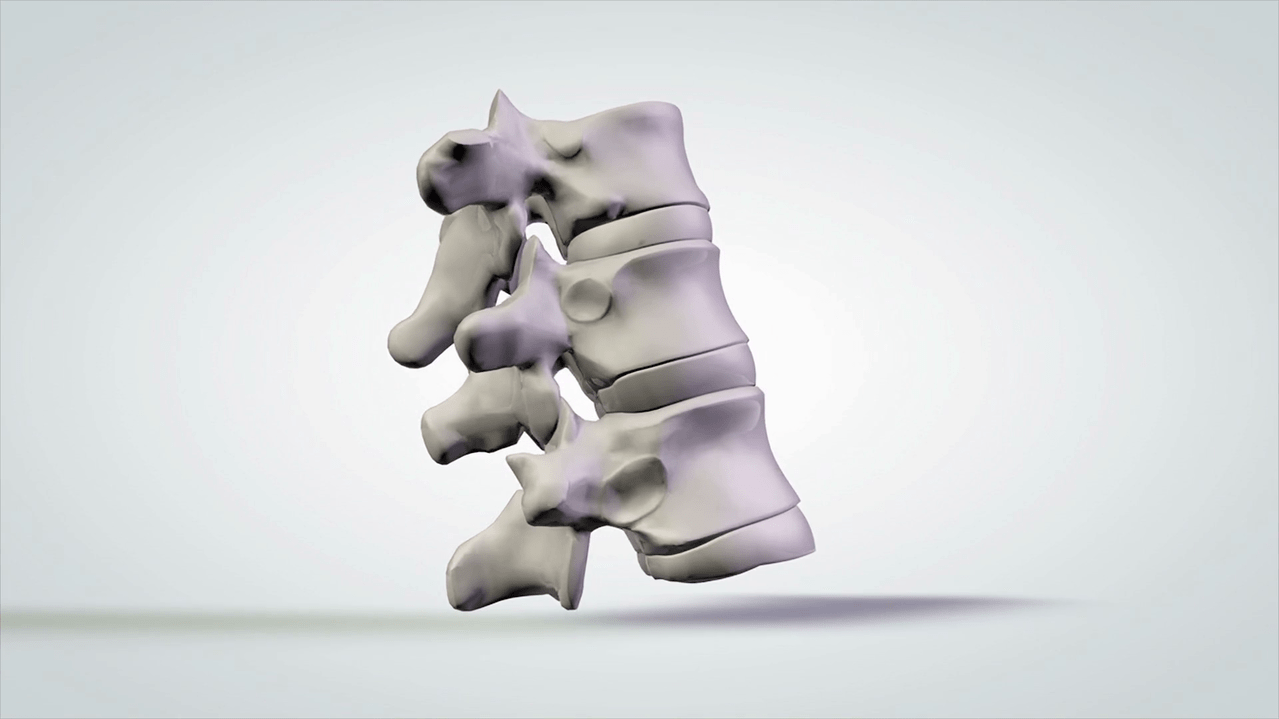
Osteochondrosis is a disease that is accompanied by degenerative-dystrophic changes in the spine. It is often observed in the region of the cervical vertebrae. This disease is not a condemnation for human health, modern medicine can easily cope with it. But you need to know the degree of osteochondrosis of the cervical spine, the causes of its development, its symptoms, as well as the main methods of diagnosis, treatment and prevention of pathology.
Factors contributing to the formation of pathology
Atrophic changes in the vertebrae are formed as a result of heavy loads on this part of the spine, spasms of muscle fibers and malfunctions of the circulatory system in this area. The deviations that occur in the discs activate the growth of formations of bone etiology, which causes pinching of the nerve structures. The reasons can be:
- twisted posture or scoliosis;
- overweight;
- inactive lifestyle;
- physical spinal injuries;
- Metabolic disorders;
- heavy load on the spine;
- genetic predisposition;
- malnutrition;
- frequent hypothermia;
- prolonged static tension of the back and neck muscles.
To reduce the risk of developing pathology, you should try to avoid these factors. If this is not possible, it is necessary to know the symptoms of the pathology in order to diagnose it at an early stage.
Signs of disease
One of the very first and true symptoms of the pathology is the radicular syndrome. It develops as a result of the growth of the structures of the intervertebral discs and compression of the nerves. The patient has numbness of the tongue, speech and swallowing disorders, tingling in the shoulders, collarbones and heart muscle. The pain may radiate to other parts of the body, especially to the upper limbs and shoulder blades.
Common signs of disease processes are:
- burning sensations, tingling in the arms and back;
- chest pain;
- severe tinnitus, loss of vision;
- pain syndrome during movement;
- periodic migraines and dizziness;
- frequent numbness of nearby body parts.
Knowing these symptoms, you can start early diagnosis and choosing a treatment strategy for the disease. This will significantly increase the chances of a full recovery of the patient's health.
Degrees and stages of progression of pathology
This disease is a very insidious disease, since it has certain degrees and stages of osteochondrosis. They have a big difference between them, because stage 1 does not actually form symptoms and proceeds latently, and in stage 2 the disease is very noticeable.
With osteochondrosis of the cervical region of the 1st degree, structural disturbances are observed in the muscular apparatus as a result of damage to the capsular formations between the vertebrae. In this case, the patient is tormented by periodic pain, swelling and numbness of certain parts of the body). There is also frequent loss of vision and dilated pupils.
Osteochondrosis of the cervical spine of the 2nd degree is somewhat more dangerous than its predecessor. This is due to the fact that the pain is sharp and pronounced. Equally important symptoms of cervical osteochondrosis of the 2nd degree are circulatory disorders of the cartilaginous structures of the spine and numbness of the upper extremities. Their education should be a signal for a specialist to start therapy. Therefore, it is important to know what osteochondrosis of the second degree is.
In the presence of grade 3 osteochondrosis, it means that the patient has severe damage to the intervertebral discs, as well as impaired cerebral circulation. This form of the disease is observed as a result of an inactive lifestyle. Some processes at the same time become irreversible and not amenable to therapy. The prognosis for the treatment of grade 3 cervical osteochondrosis is favorable in most cases, but does not guarantee a full recovery of the patient.
Osteochondrosis of the 4th degree is a disease that occurs in a neglected and decompensated form. In this case, the patient has very serious structural lesions of the spine, as well as severe cerebrovascular insufficiency. This type of pathology is dangerous to the life of the patient, so he must be under the supervision of medical personnel around the clock.
Attention!It is the division of osteochondrosis of the cervical spine into degrees that allows doctors to assess the patient's condition as accurately as possible, as well as choose the most effective strategy for his treatment.
Diagnosis and treatment of the disease
The disease is diagnosed using various instrumental and laboratory methods. These include:
- General and biochemical analysis of blood.
- X-ray examination.
- Ultrasound examination.
- CT.
- Magnetic resonance imaging.
An equally important factor is the doctor's subjective examination. During it, the specialist should find out the anamnesis of the disease and the life of the patient. He should also visually inspect the affected area and listen to the patient's complaints.
With osteochondrosis of the first degree and osteochondrosis of the second degree, the goal of therapy is to eliminate the symptoms of the disease. Medicines should relieve headaches, spastic conditions of the muscular apparatus, and also stabilize metabolic processes in spinal structures. In this case, the doctor uses painkillers. At the same time, you need to know how to properly treat osteochondrosis of the 2nd degree so that the pathology does not go to the next stage.
When treating cervical osteochondrosis of the 3rd degree, a neurologist can use warming and anti-inflammatory drugs. They help to cope with more serious manifestations of pathology. The last degree of the disease requires symptomatic treatment and patient care. In this case, large amounts of narcotic painkillers are introduced to reduce the severity of a person's pain.
It is important to remember that only a doctor should deal with the treatment of the disease, since self-medication can lead to serious complications.











